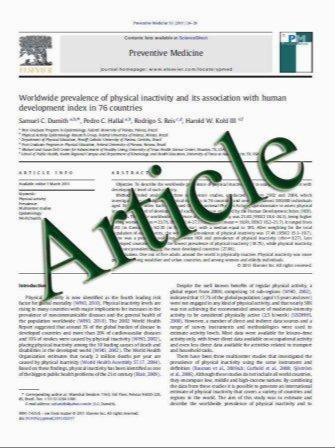Are pulmonary artery pulsatility indexes able to differentiate chronic pulmonary thromboembolism from pulmonary arterial hypertension? An echocardiographic and catheterization study
- نوع فایل : کتاب
- زبان : انگلیسی
- مؤلف : Tomas Palecek Pavel Jansa David Ambroz Zuzana Hlubocka Jan Horak Marcela Skvarilova Michael Aschermann Ales Linhart
- چاپ و سال / کشور: 2010
Description
The differentiation between chronic pulmonary thromboembolic hypertension (CTEPH) and pulmonary arterial hypertension (PAH) remains a clinical challenge. The aim of our study was to evaluate the usefulness of both echocardiographically and invasively derived pulmonary artery pulsatility indexes in the etiologic differentiation of patients with CTEPH and PAH. We retrospectively analyzed the results of echocardiographic and invasive hemodynamic examinations in 125 patients with either CTEPH (n = 62) or PAH (n = 63). Invasive data were obtained in 52 patients with CTEPH and 43 PAH patients. Using echocardiography, pulmonary artery systolic (PASP), diastolic (PADP) and mean (PAMP) pressures were estimated from velocities of tricuspid regurgitation and pulmonary regurgitation, respectively. Pulse pressure (PP) was calculated as the difference between PASP and PADP. To obtain pulmonary artery pulsatility indexes, we normalized PP by PASP (PP/PASP), by PAMP (PP/PAMP) and by PADP (PP/PADP). Pulsatility indexes assessed by echocardiography did not differ between CTEPH and PAH patients except for PP/PAMP [PP/PAMP (1.82 ± 0.33 vs. 1.40 ± 0.3, p\0.001)]. Invasively derived pulsatility indexes were significantly higher in subjects with CTEPH (0.60 ± 0.08 vs. 0.53 ± 0.09 for PP/PASP; 0.98 ± 0.21 vs. 0.81 ± 0.21 for PP/PAMP; 1.58 ± 0.52 vs. 1.21 ± 0.41 for PP/PADP; all p\0.001). The areas under the receiver-operating characteristic curves analysis showed that no cutoff value allowed discriminating between CTEPH and PAH by using echocardiographically or invasively derived pulsatility indices. Invasively derived pulmonary artery pulsatility indexes as well as echocardiographically determined PP/PAMP indexes are higher in CTEPH compared to PAH. However, due to the important overlap no optimal threshold values of these parameters can be given to allow satisfactory discrimination of the two diseases in clinical practice.
Heart Vessels (2011) 26:176–182 DOI 10.1007/s00380-010-0044-x Received: 1 July 2009 / Accepted: 25 March 2010 / Published online: 16 October 2010


